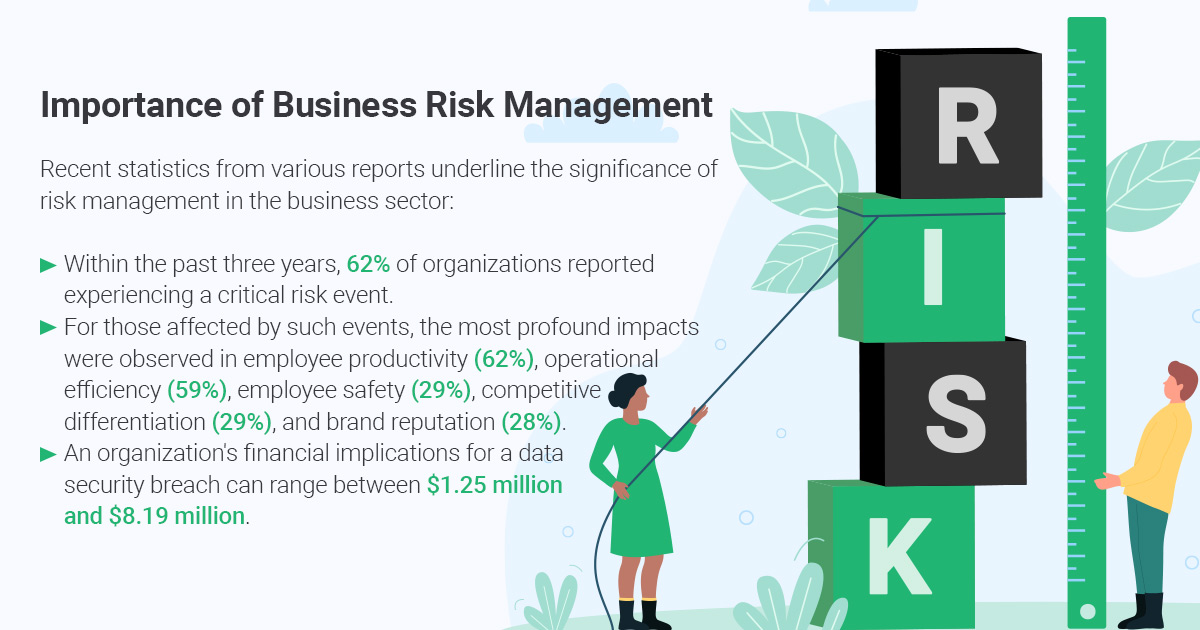The Crucial Importance of Risk Management in Economic Decision Making
Discovering the Importance of Risk Management for Effective Decision-Making Methods
In the intricate globe of business, Risk Management emerges as a critical element in the decision-making procedure. The ability to identify potential threats and opportunities, and plan accordingly, can mean the distinction in between success and failure.
Comprehending the Principle of Risk Management
Risk Management, a crucial element in decision-making, is often misconstrued or oversimplified. Typically, it refers to the recognition, evaluation, and prioritization of risks to reduce, keep an eye on, and control the possibility or influence of unfavorable occasions. It's not just about stopping unfavorable outcomes, however likewise concerning acknowledging potential chances. Risk Management includes organized and disciplined strategies, utilizing data and informative analyses. It needs an extensive understanding of the organization's context, goals, and the possible threats that might obstruct them. From financial uncertainties, legal responsibilities, strategic Management mistakes, to mishaps and all-natural catastrophes, it deals with different threats. Significantly, reliable Risk Management is not stationary; it's a continual, positive procedure that develops with changing circumstances.
The Role of Risk Management in Decision-Making Processes
In the world of calculated preparation and service operations, Risk Management plays an essential role in decision-making procedures. Risk Management thus becomes an important device in decision-making, assisting leaders to make enlightened selections based on a comprehensive understanding of the threats involved. Risk Management offers as an important element in the decision-making processes of any kind of company.

Just How Risk Management Improves Strategic Planning
In the context of tactical planning, Risk Management plays an essential role. Initiating with the recognition of potential risks, it better prolongs to the implementation of Risk reduction steps. The duty of Risk Management is dynamic yet not static, as it requires constant surveillance and adjusting of techniques.
Recognizing Potential Threats

Applying Risk Mitigation
Risk reduction techniques can vary from Risk evasion, Risk transfer, to run the risk of decrease. Each method should be customized to the specific Risk, considering its potential impact and the company's Risk resistance. Effective Risk reduction needs a deep understanding of the Risk landscape and the possible influence of each Risk.
Monitoring and Changing Methods
Though Risk mitigation is an essential action in tactical planning, visit this website continual monitoring and adjustment of these methods is similarly crucial. It likewise offers a possibility to examine the success of the Risk Management actions, enabling modifications to be made where necessary, more enhancing tactical planning. Monitoring and adjusting Risk Management techniques is a critical component for enhancing a company's strength and calculated preparation.
Case Studies: Successful Risk Management and Decision-Making
In the globe of company and financing, successful Risk Management and decision-making usually serve as the pillars of thriving ventures. These cases highlight the value of sharp Risk Management in decision-making procedures. These instances underscore the essential function of Risk Management in calculated decision-making.
Devices and Strategies for Reliable Risk Management
These devices, such as Risk registers and heat maps, help in determining and examining potential threats. Risk action techniques, a key element of Risk Management, entail accepting, staying clear of, transferring, or mitigating dangers. With these devices and strategies, decision-makers can browse the complicated landscape of Risk Management, consequently assisting in educated and effective decision-making.
Future Fads in Risk Management and Decision-Making Approaches
As we explore the large landscape of Risk Management, it ends up being noticeable that the methods and devices utilized today will certainly continue to progress. The concept of Risk culture, where every participant of a company is aware and included in Risk Management, will certainly get much more prominence. These fads proclaim a more inclusive and positive technique towards Risk Management and decision-making.
Final thought

Risk Management thus comes to be an essential tool in decision-making, helping leaders to make educated selections based on a thorough understanding of the dangers included. Risk mitigation techniques can vary from Risk avoidance, Risk transfer, to run the risk of reduction (importance of risk management). Effective Risk reduction needs a deep understanding of the Risk landscape and the possible impact of each Risk. Risk reaction techniques, a vital component of Risk Management, entail approving, avoiding, moving, or mitigating risks. The idea of Risk society, where every participant of an organization is conscious and included in Risk Management, will certainly acquire more prominence